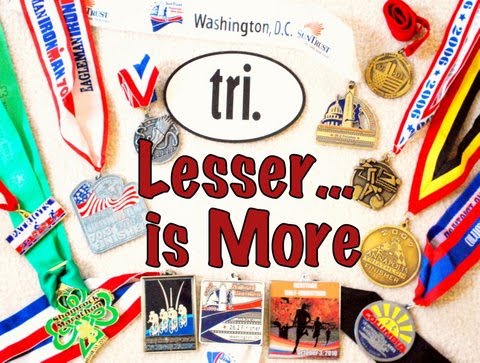Let me clear that I haven't always been a huge fan of the treadmill. I've said my fair share of four letter words when realizing that I'd be running on one. But what I've learned or found over time is that it doesn't have to suck. It can be enjoyable and you can find some of the same appreciation for running on a treadmill as you can for doing it outside. So while there are plenty of reasons to dislike it, let's talk about why you should be enjoying the treadmill more than you do:
- You are what you think you are - Only the space inside your head decides it's a "deadmill" run versus another opportunity to improve your running. Change the mindset and your perspective of the run changes as well. It doesn't all have to suck. View the positive and focus on it. Use it as a mantra if you need it to get you through the run, but bringing a positive outlook will almost always result in a more positive experience.
- Find the purpose - As with any planned run, there should be a purpose to the workout. If you simply hop on the treadmill with no idea other than "just run", my bet is that you'll find it boring. But find a purpose, whether a speed/tempo workout or simply an easy run, and the clear goal helps bring clarity to your mind about why you are doing what you are doing.
- Focus on new things - When you're outside, chances are you're thinking more about your next step or something else you that requires your immediate attention. But treadmill running allows you to focus on things you might not have an opportunity to think about otherwise, such as form. Have a friend take a short video from multiple angles and use the run as motivation to run with good form. Then, when you're done (or even in the middle of the run), you can review it to determine if there are any immediate changes you'd like to implement.
- Multitasking for the overachiever - We're all busy people and sometimes life isn't ALL about running. Well, the nice thing about the treadmill is that it can allow you do accomplish other things. If you have an ipad or an e-reader, you can keep tabs on work or virtually anything else. An easy run can be a great opportunity to zip through some articles you've been wanting to read. Simply crank up the font size so you don't have to squint and read away.
- TV/Movies galore - The most surefire way to get through a run on a treadmill is to dial up your favorite series or movie and get running. Seriously, time flies when you don't have to think about running. Now, be sure you are running at a half decent speed and not slacking off. Its too easy to slog through at a slow pace and get stuck in the show, but you can log some serious miles by going through your Netflix queue. Just make sure they're quality miles.
- Embrace the suck - I'm not saying every run is rainbows and unicorns, so I am well aware that some runs just suck. Even 10 minutes can feel like torture. Embrace it and remember that the person that comes out the other end of that run is stronger because of the struggle to get through it. Training for something always takes effort, both physically and mentally. Sometimes, a treadmill can bring the more mental aspect of a workout to the table. That should be something you can embrace, knowing that you'll be more ready to fight when things get tough.
With winter already rearing its ugly head in most of the country, its time to hunker down and get ready for some treadmill miles if they are called upon. Consistency is king, so don't let some nasty winter conditions prevent you from becoming your best.
The real question is, will you be able to handle it or will winter get the best of you? My recommendation is to be ready and willing to do what it takes. I know I am.
